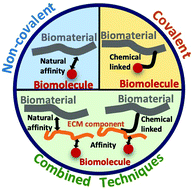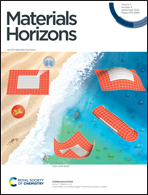Surface biofunctionalization to improve the efficacy of biomaterial substrates to be used in regenerative medicine
Abstract
Surface biofunctionalization has emerged in the past decade as a rising tool in Tissue Engineering and Regenerative Medicine (TERM) approaches. The development of biomaterial substrates with regenerative properties is challenging, mainly due to the requirement of obtaining a surface that promotes cell attachment, proliferation and differentiation. Biomolecules, namely extracellular matrix proteins and growth factors, play a key role in the wound healing cascade, mediating a wide range of cellular activities. Therefore, the immobilization of such biomolecules at the surface of biomaterials has a remarkable interest for TERM strategies. Numerous variants can be used to biofunctionalize the surface of biomaterials, being classified as non-covalent and covalent immobilization strategies. Importantly, the maintenance of stable/available bioactive factors needs also to be considered. In this review, a wide range of bioactive molecules and different biofunctionalization strategies will be discussed, as well as the most relevant results achieved in the novel and most promising strategies.



 Please wait while we load your content...
Please wait while we load your content...